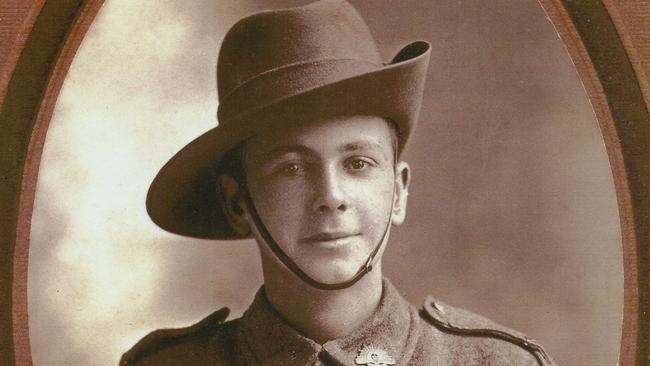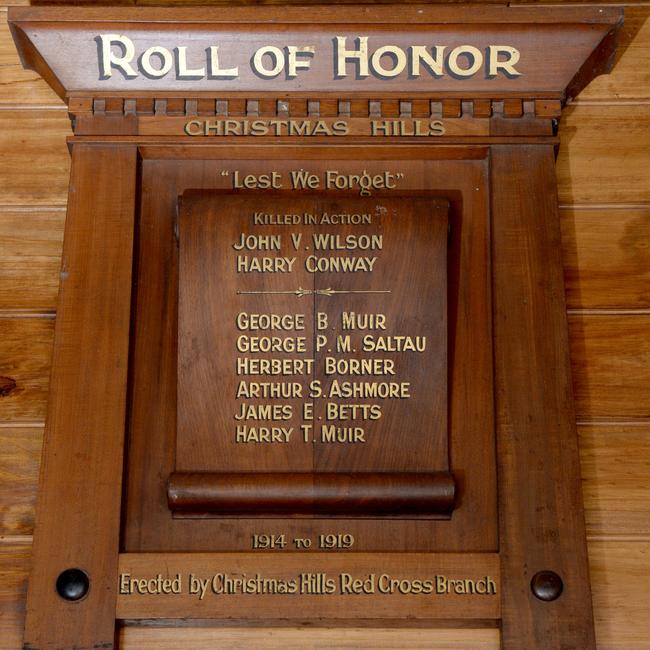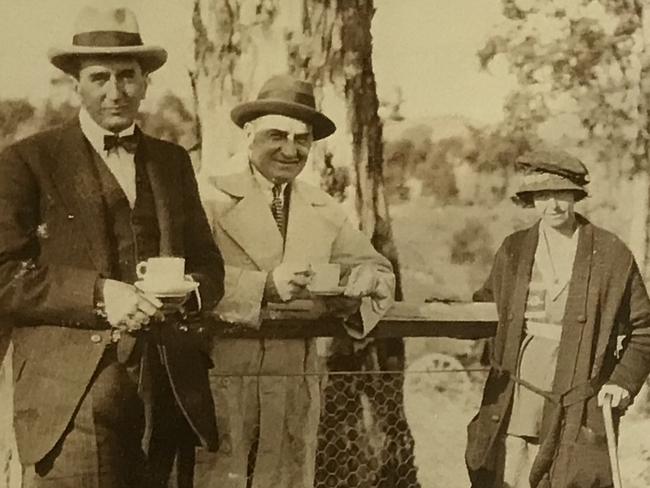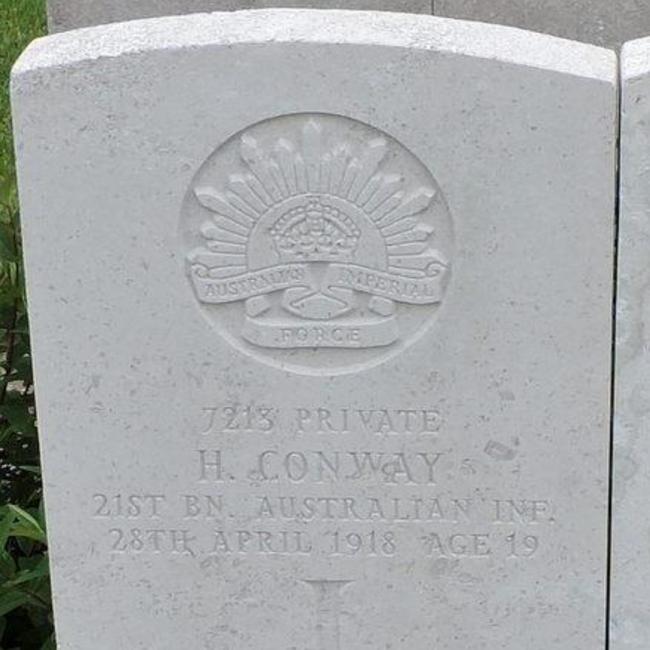Mystery solved: Pte Conway’s 1918 temporary grave marker from France found in Beaumaris garage
A timber cross made for a young WWI Australian soldier who died in France has been found by chance in a Beaumaris garage more than 80 years on.

Victoria
Don't miss out on the headlines from Victoria. Followed categories will be added to My News.
A temporary wooden cross made for the grave of a teenage Melbourne soldier who died in northern France during World War I has been discovered in a Beaumaris garage several decades later.
The cross was created for Private Harry Conway, of the 21st Infantry Battalion, who was injured in battle and died of his wounds two weeks later, on April 28, 1918.
Such was the carnage on the battlefield, proper headstones could not be found for the cemetery in Rouen.
Instead, a timber cross, with a simple name plate bearing his service number and name – 7213 Pt H Conway – was installed, later replaced and then sent back to his mum Rosamond who lived in Christmas Hills, a rural community 35km northeast of Melbourne.
Mrs Conway died in 1940 and the whereabouts of her son’s treasured cross was unknown for eight decades.
The cross has now been restored by members at the Montmorency Eltham RSL and will be formally unveiled on Monday, Remembrance Day.
None of Pt Conway’s relatives have ever been located.
Harry Conway was a bright, well-mannered young man when he enlisted to fight for King and country in 1916, just weeks after his 18th birthday.
He was already handy with a gun thanks to weekends spent at his local rifle club near his Christmas Hills home.
His rifle skills were to earn the young private a role as a sniper when he arrived at the battle frontline in Normandy, northern France.

He joined his battalion in September 1917 and the following month was wounded in action when an exploding shell partly buried him.
He recovered but the following year he sustained serious injuries from which he would not recover.
The cross made for Pte Conway and one of few returned to Australia took on special significance for Mrs Conway because a collection of her son’s personal effects that were being shipped home were lost when the S.S. Barunga was torpedoed and sunk by a German submarine off the southwest coast of England in July 1918.
The handmade cross became a sole reminder of her only son’s wartime service.
Mrs Conway then became a central figure in organising commemorations in her community in the following years. She helped organise the construction of a soldiers’ memorial near the Christmas Hills Mechanics Institute Hall in 1921. That memorial is still a focus of Anzac and Remembrance Day events today.
The official unveiling was conducted by federal MP Stanley Bruce, who two years later would become prime minister.

The rifle club at Christmas Hills would also go on to honour one of their youngest former members. After the war, the club announced it would offer an annual Harry Conway Memorial Prize.
Pte Conway’s mother died in August 1940, aged in her 60s.
The cross was forgotten until Beaumaris resident Graeme Funnell found it during renovations at the house previously owned by his father. The cross was tucked away in a cupboard at the back of the garage.
The only possible known connection was that the executor of Mrs Conway’s will was Edith Stawell who lived near Mr Funnell’s home.

The “Conway Cross” will go on display at the Montmorency Eltham RSL along with Pte Conway’s small memorial plaque which had been given to his mother in memory of his sacrifice.
The plaques were often referred to as a ‘Dead Man’s Penny’, and some even regarded them as a symbol of bad luck.
Sub-branch vice-president Lt-Col Ash Williams said finding and saving the cross was significant.
“It had been a privilege to remember Pte Conway and tell his story so he is not forgotten,’’ he said.
The Victorian branch of the Vietnam Veterans Association has brought the restoration and display to reality.
Pt Conway joined up on November 6, 1916.
He is one of 3082 Commonwealth burials at St. Sever Cemetery in Rouen, and one of the 53,000 Australians who died in France during the Great War.
His headstone carries the words: “God be with you my son till we meet again. Mother.’’
Originally published as Mystery solved: Pte Conway’s 1918 temporary grave marker from France found in Beaumaris garage



